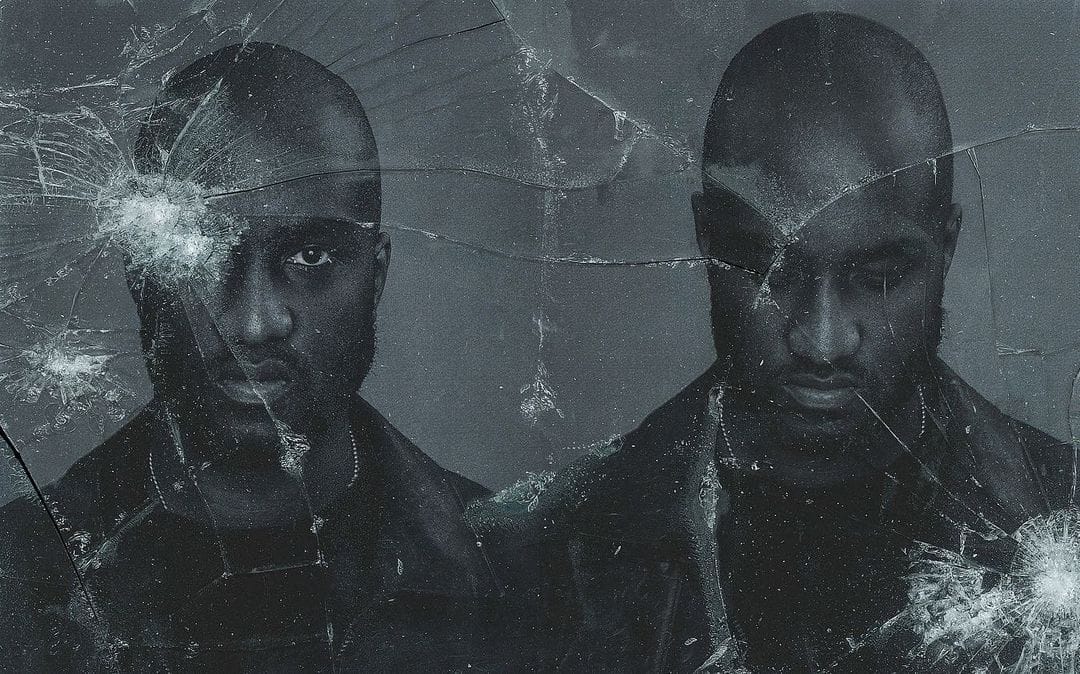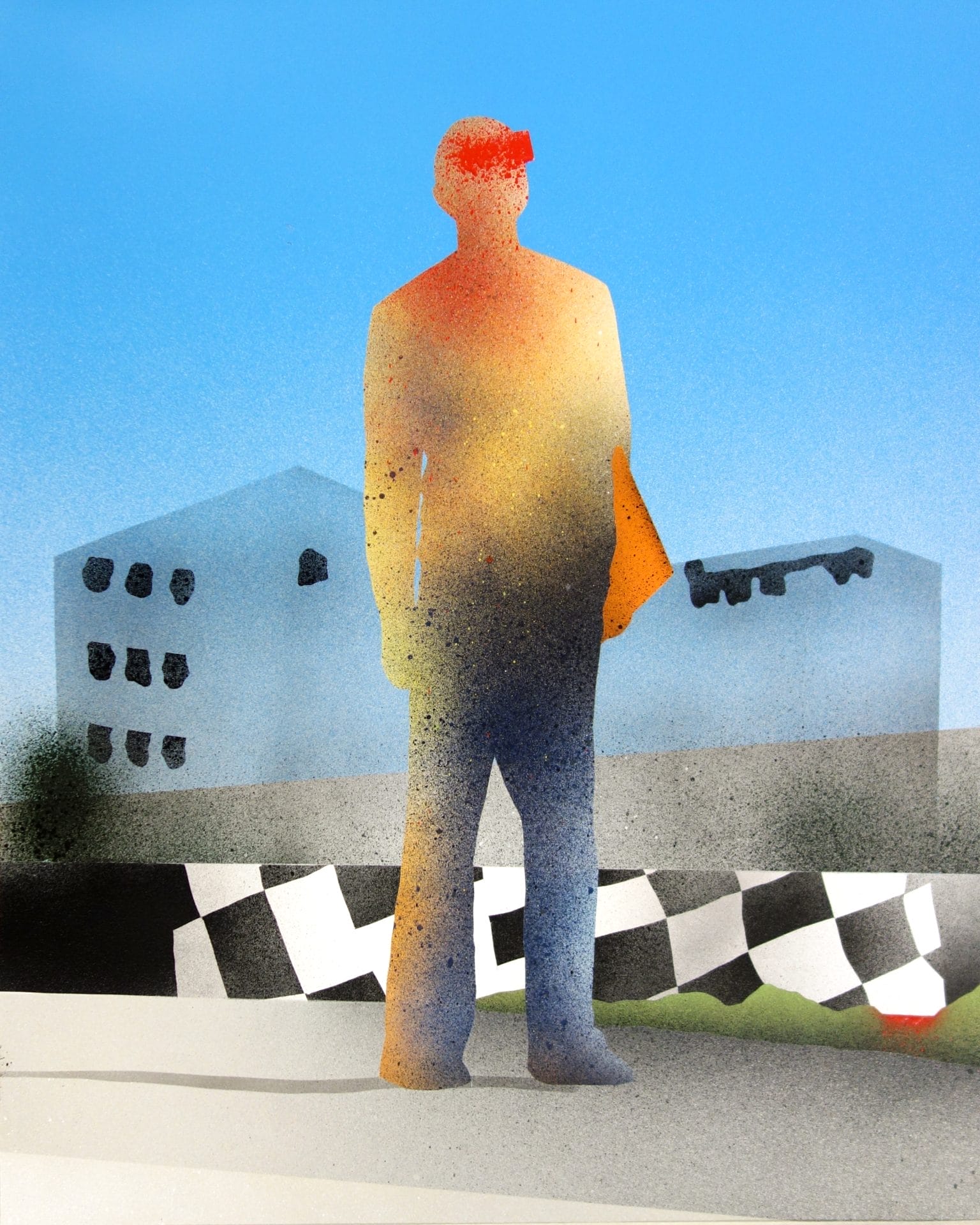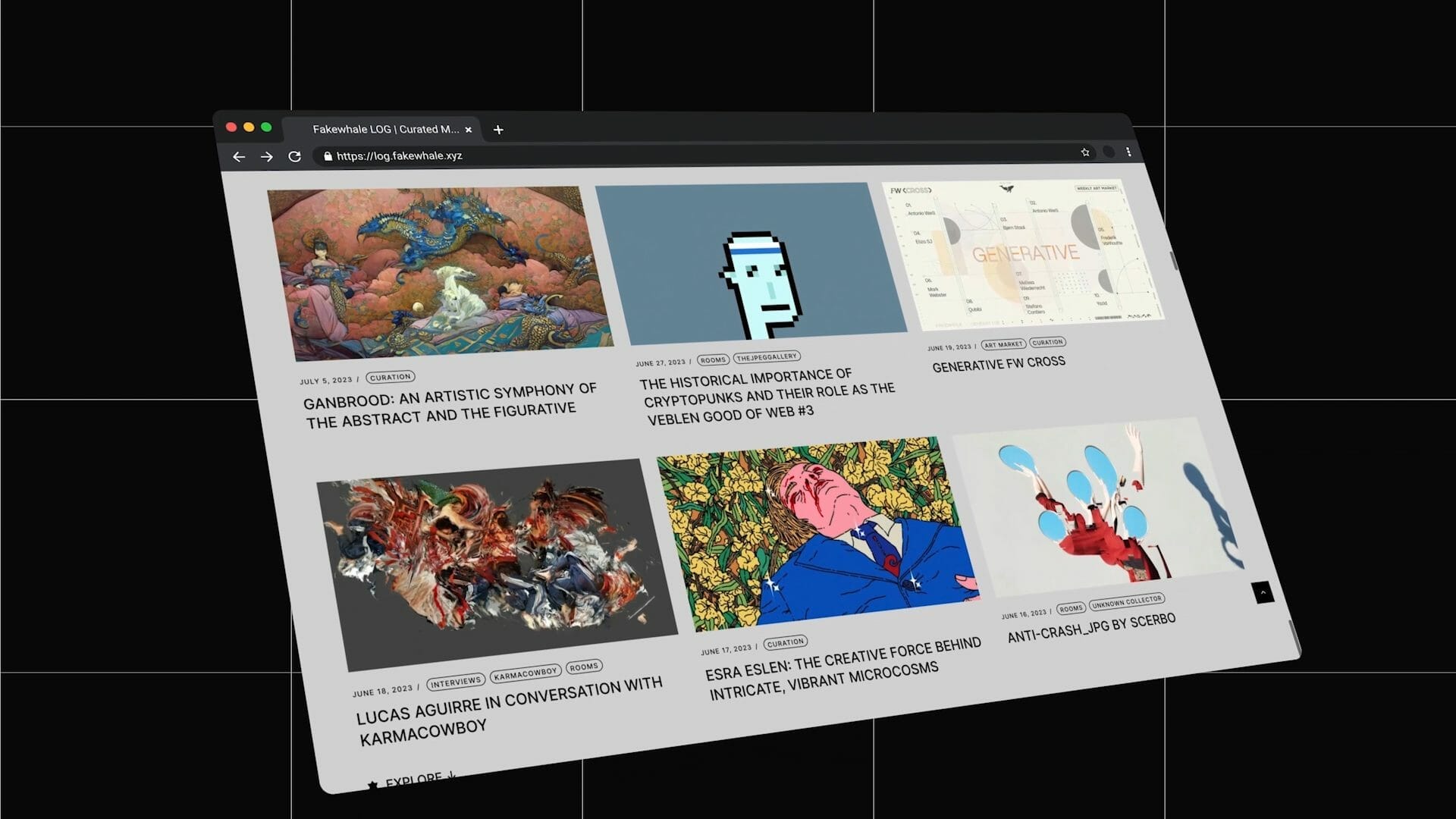
Virgil Abloh: Commemorating a Catalyst of Contemporary Culture
Culture, in its essence, is a reflection of collective experiences, beliefs, and innovations. It evolves with time, often influenced by the very creators who stand at the intersections of different domains. Fashion, art, and digital media are not just threads within this tangle of culture, but potent catalysts shaping and being shaped by its zeitgeist. And Virgil Abloh, with his profound understanding of these forces, embodied the very spirit of this cultural synthesis.
His words resonate deeply: “The amount of random conversations that lead to culture-shifting ideas is insane.” Indeed, for Abloh, these weren’t just conversations; they were the undercurrents of a cultural transformation.
As we navigate the fluidity of our era, fashion is evolving, embracing the nuances of digital technology. Art, with its roots deep in history, is spreading its wings, soaring into the limitless potential of new mediums. Digital media, the mirror reflecting contemporary sensibilities, intertwines with the rich aesthetics of fashion and art, becoming an integral part of our cultural narrative.
Virgil’s genius lay in harnessing this confluence, creating a dialogue that was both introspective and expansive. Through Off-White, he presented a narrative that was as much about global culture as it was about fashion, capturing the pulse of the streets and the allure of luxury, all punctuated with digital age motifs.
In tribute to Virgil Abloh’s legacy, this article offers more than just praise; it delves deep into the cultural landscape he profoundly influenced. The voices of his collaborators—photographers, digital artists, and visual storytellers—provide a comprehensive perspective on his legacy.

Decoding Virgil Abloh’s Cultural Legacy: Insights from Key Collaborators
“The whole point of collaboration is that you give and take from each other, and that’s how you create things that are totally new.”
_Virgil Abloh
Guided by this ethos of mutual exchange and co-creation, Virgil Abloh left an indelible mark on contemporary culture. His influence, both profound and multidimensional, can best be unpacked by delving into the experiences and insights of those who collaborated closely with him. These professionals — Bogdan Plakov, Woc and No Text Azienda — each significant in their own domains, brought unique perspectives and expertise to their joint endeavors with Virgil, forging innovations that transcended traditional boundaries.

Bogdan Plakov: Interpreting Virgil’s Visionary World
Capturing the essence of Virgil Abloh’s journey through a keen photographic eye, Bogdan Plakov offers a visual narrative that’s both intimate and expansive. His lens delving into the layers of Virgil’s creative process, capturing moments that articulated the essence of his design philosophy and cultural impact. Plakov’s work provides a visual chronology, detailing significant moments and subtle nuances alike. It’s through these images that a clearer picture of Virgil’s impact on fashion and art emerges, showcasing a story of innovation and cultural influence.
Fakewhale: Your photography has captured Virgil Abloh in various candid and professional settings. Can you share how your visual storytelling evolved through the lens of Virgil’s multifaceted career?
Bogdan: The storytelling evolved with the more time we were passing together and becoming closer to each other in a way that I could be at a very close distance but also be “invisible” while taking images – in order not to disturb an ongoing process or conversation he might be having with someone. He trusted me completely.
Fakewhale: What is the most memorable work you did with Virgil Abloh, and what lessons have you learned from working closely with him?
Bogdan: There are few images that might be the internet’s “most memorable” ones (the kite one from his first LV show, his portrait press photo sitting on the chair and few more) . To me every single moment was memorable to be honest. I cherished every moment while it was happening.
Ah man learned so much, impossible to sum it all. Have faith in your work and the people you work with, lead with kindness, be humble, collaborate, be curious, travel, be inspired by the “no’s”, put your work out in the world, when you make it – work harder and much much more.
Fakewhale: How did your collaboration with Virgil Abloh influence your photographic style or the subjects you choose to capture?
Bogdan: Spending time together, traveling, having conversations, working on projects all of this influenced every part of me.
Fakewhale: Virgil Abloh’s work transcended fashion and entered the realms of art, music, and culture. How did this multidisciplinary approach reflect in the photographs you took of him?
Bogdan: My goal was always to have the best images possible for any given moment, an image that could transfer to the viewer the feeling of being there with us. Or freeze a rare moment. Different situations required different approaches.
Fakewhale: In what ways do you think your photography, especially in capturing Virgil Abloh’s work, contributes to narrating the evolution of contemporary fashion and art to a broader audience?
Bogdan: That’s a question the people should answer. I’m honored to have documented historical moments of someone so dear to me. And to have created beautiful work together. He loved what we were doing together and to me that’s more than enough – if any image has helped to inspire someone in any good way I’m more than happy. Thank you V for everything, you changed the world. We love you and we miss you every day!

Woc (Flavio Rossi): Artistic Synergies with Virgil
Italian artist Flavio Rossi, known as Woc, explores the rich symbolism embedded within modern digital images, from web photos to brand logos. In his collaboration with Virgil Abloh, they showcased the seamless blend of digital art and fashion, crafting aesthetics that resonate in today’s tech-centric world. This isn’t just a fusion of art forms; it’s a commentary on our evolving interaction with art in a digital age. Here, we dive into a candid conversation with Woc to understand this synergy better.
Fakewhale: Your collaboration with Virgil Abloh began with a virtual interaction that led to your involvement with Off White. Can you delve into how this collaboration shaped your approach to digital art and symbolism in the contemporary era?
Woc: My collaboration with Virgil began through a Direct Message I received on Instagram shortly after tagging him in a drawing I had posted. This mode of communication was as informal as it was unimaginable when considered as the starting point of a working collaboration with the most influential creative director in the world at the time. From that moment on, the internet, social media, and internet language have not taken on a different value for me. I had been using Instagram for a while, seeking both promotional and professional feedback, and this dynamic simply confirmed the importance of the web as a vehicle, a source of inspiration, and a platform to promote and showcase creative ideas.
The collaboration lasted for approximately three years and was entirely virtual; we never met in person. To this day, I believe that few artists truly understand how to navigate the vast digital world to make the most of both virtual and real possibilities that the internet provides.In the contemporary era, it would be wonderful to aspire to and witness a broader and more natural integration between physical art and technology, between the internet and real life.
Fakewhale: Were there any specific projects you and Virgil worked on that you find particularly impactful on your artistic journey?
Woc: Many projects have been particularly meaningful to me, especially those that received positive feedback and were effectively used and commercialized.
For example, the artwork featuring Michael Jackson used on various items in the Men’s SS 2019 collection or the one featuring Paris Hilton, printed on a staff t-shirt for the Women SS 2018 runaway show in Paris, which Virgil wore on several official occasions.
Creating commissioned artworks for his private collection was undoubtedly significant as well, along with working on projects that didn’t come to fruition, such as some artworks for Kid Cudi or Rage Against The Machine merchandise.
Fakewhale: Virgil Abloh has revolutionized the world of design by bridging street philosophy with fashion dynamics. How do you think this approach has influenced both current and future generations of creatives and consumers?
Woc: Virgil has revolutionized not only the world of streetwear and design but, in my opinion, has proven to be a true creator of a remarkably successful creative business model.
Contextualizing a street product within the fashion commercial system has led to mass engagement and an almost feverish interest from a broad and youthful audience in the concept and products of a brand. Off-White was founded in 2013, and seven years later, in 2020, it emerged as the world’s most coveted brand.
Considering the various positive and negative aspects that such a project may encounter and the dynamics that led to such a rapid rise in Abloh’s name, his figure can only be a source of extreme inspiration and a reference point for young designers, artists, and creatives worldwide.
Fakewhale: Are there elements of Virgil Abloh’s design ethos that continue to inspire your work or that you aim to explore in your future projects?
Woc: Virgil’s approach to creative engagement, transcending spatial, conceptual, and temporal barriers throughout his career, has been a fundamental source of inspiration for me. Virgil had the ability to engage and converse in the same way with the creativity of a young, unknown artist like me, as he did with legendary figures like Futura 2000, a pioneer and inventor of graffiti art.
The multidisciplinary nature of creative ideas and the ability to consistently shape and adapt an artistic concept in the realms of fashion, design, and music is an objective I aspire to work on and improve day by day.
Fakewhale: How do you think the fusion of digital art and fashion, as seen in your collaboration with Virgil Abloh, contributes to evolving contemporary aesthetic narratives?
Woc: The fusion of art and fashion has existed for a long time. Consider iconic Yves Saint Laurent pieces inspired by Piet Mondrian’s works or the more recent expressionist collections created by the painter Sterling Ruby.
Today, in the era of full digital development, the expressive language of digital art seems to connect strongly with that of fashion, especially regarding the creation of artistic and promotional content. I hope that the intersection of fashion and digital art gains increasing coherence and harmony over time, moving away from what can be seen as more stylized and video game-like aspects, which, in my opinion, may not align well with the language of fashion. Instead, it should focus on the real material, historical, and conceptual aspects of clothing.

No Text Azienda: Capturing Off-White’s Visual Pulse
No Text Azienda‘s mastery in crafting compelling visual narratives made them an indispensable part of Off-White’s storytelling. Their expertise in creating captivating visual narratives has been a crucial element in Off-White’s storytelling journey. As a pioneering collective specializing in video production, No Text Azienda’s work with Virgil Abloh captured the spirit of Off-White, aligning with the cultural heartbeat of a generation. It offered a unique perspective, through which the world could appreciate Virgil’s visionary approach. Through their memories, we delve into the behind-the-scenes moments that defined these visual narratives.
Fakewhale: Could you recount the genesis of your collaboration with Virgil Abloh? What were the pivotal discussions or events that shaped the initial direction of the projects you embarked on together?
No Text Azienda: We met in Milan in 2016. Initially, we only had to film BTS during the atelier days in preparation for the show in Paris (‘Business Woman’), but surprisingly Virgil invited us to come to Paris and continue shooting… He opened the doors to a world that we had never seen in person until that moment!
From then on, we worked together for years, documenting (alongside the Kamera Kombat Team) many significant moments in the history of Off-WhiteTM fashion shows, as well as collaborating with him on independent projects (such as music videos for rappers like Lil Uzi Vert or Pop Smoke…) and his artistic projects.
Fakewhale: Can you describe the creative process when working with Virgil Abloh on Off-White video and publicity projects? What was the dynamic interplay like, and how did the conceptual ideas mature over the course of the project?
No Text Azienda: Every project with Virgil was a totalizing experience… drawing maps and taking uncharted paths was often the true focus. The final result was a consequence of that journey.
He always made us feel involved on a personal level, consistently valued our opinions, and encouraged us to do whatever we wanted to, disregarding many conventional “how-to” guidelines. We had many group chats… one of them was called “Punk Modus Operandi”.
Fakewhale: Can you recall specific interactions or episodes with Virgil Abloh that have left a lasting imprint on you? What aspects of these experiences stood out as particularly meaningful or eye-opening?
No Text Azienda: Countless were the eye-opening moments; you only had to observe him in the most diverse situations—from the most trap and chaotic contexts in the underground to the highest- class settings in the world, from the LV atelier to the streets of Milan…. He always had a mega open-source approach, connecting people and showing interest in a billion topics. We never saw him treat anyone badly.
Fakewhale: In commemorating Virgil Abloh’s legacy, what do you believe were his most significant contributions to the art and fashion sectors, and how do you see his influence continuing in the industry?
No Text Azienda: We, along with all the people around the world who have had the fortune of knowing and collaborating with Virgil, have the responsibility to carry on his legacy.
The industry, in general, seems to have its sole purpose as the industry itself… Virgil was an unpredictable and magic force because he truly did not exclusively adhere to “industrial logic”.
Fakewhale: As you navigate through your creative journey post the collaboration, how do you perceive Virgil Abloh’s ideologies or methodologies echoing in your work? Are there particular projects where his influence played a significant role or provided a guiding perspective?
Alvin: During a party in one of the poshest clubs in Paris, he interrupted his DJ set because someone said to him that one of the seamstresses working in the atelier was being turned away by the bouncer at the entrance. When one of the organizers asked for an explanation, he responded with something like, “If you don’t like my people, you don’t like me!” and then we all left the club.
Often, we find ourselves wondering what V would say about this or that topic…
We miss him and the creative-artistic-intellectual exchange we had with him. Certainly, his multi-disciplinary and cross-cultural approach is something we’ve absorbed. Through his inspiration, we danced with the impossible, turning it into our practiced poetry.
Threads of Thought: Virgil Abloh’s Indelible Cultural Imprint
At the crossroads of contemporary culture—where art, fashion, and digital media intertwine—stands Virgil Abloh. And through the testimonies of his collaborators, we come to appreciate not just the scale, but the depth of his cultural contributions.
His belief in the potency of casual dialogues, the fortuitous intersections of diverse minds, was emblematic of his ethos. To Virgil, every whispered idea, every shared thought held the potential to disrupt and redefine.
Drawing inspiration from Virgil’s words, “Art is made in hindsight,” we recognize that his legacy isn’t just in the tangible designs he crafted, but in the conversations he sparked and the paradigms he shifted. And as we look back, it’s clear that Virgil’s art – his work, his collaborations, his vision – will continue to inspire, influence, and shape culture for generations to come.
In celebrating Abloh, we don’t just remember a cultural icon; we embrace the challenge to shape tomorrow with the wisdom of yesterday.
fakewhale
Founded in 2021, Fakewhale advocates the digital art market's evolution. Viewing NFT technology as a container for art, and leveraging the expansive scope of digital culture, Fakewhale strives to shape a new ecosystem in which art and technology become the starting point, rather than the final destination.
You may also like
FW Spotlight: Top Submissions of February
There are places where images are fixed, and others where they dissolve. Our gaze, caught between th
Fakewhale Solo Series presents Vantalight by A.L. Crego
On April 10th, Fakewhale Gallery’s Solo Series is set to unveil “Vantalight” by A.
Fakewhale Presents FW LOG – Curated Media
When we founded Fakewhale, our main objective was to create a permanent collection that could docume




